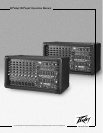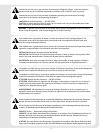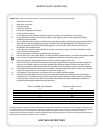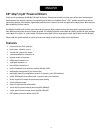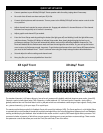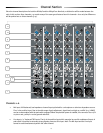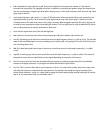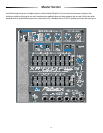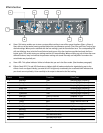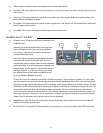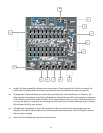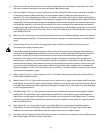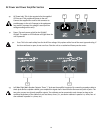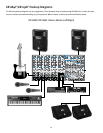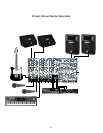7
3. Pad: Attenuates the input signal by 25 dB. If you notice distortion from a particular channel or if the channel
becomes loud very quickly‚ try engaging this switch. In addition to increasing the dynamic range‚ the channel input
can now accommodate a higher input level before clipping occurs. This may be necessary when close-mic’ing a loud
guitar amp or drum kit.
4. Insert Jacks (channels 1 and 2 only): 1/4" stereo (TRS) jacks which allow an external device to be inserted into the
signal path before (pre) EQ. The tip carries the send signal and the ring is the return signal. A switch in the jack
normally connects the send to the return until a plug is inserted. When plugged in partially (first click)‚ the jack can
be used as a pre-amp output without interrupting the channel. This is a great place to insert a dedicated EQ‚ effects
unit or tube preamp for an acoustic instrument or lead vocal.
5. Gain: Sets the signal level sent to the Left and Right bus.
6. Mon (monitor): Controls the level of each channel signal (pre-EQ) that is added to the monitor mix.
7. Low EQ: A shelving type of active tone control that varies the bass frequency levels (+/-15 dB at 70 Hz). This will add
depth to thin-sounding signals or clean up muddy ones. As with any EQ‚ use sparingly. Too much of this EQ can give
you a booming bottom end.
8. Mid EQ: A band pass (peak/notch) type of active tone control that varies the mid-range frequencies (+/-15 dB at
1 kHz).
9. High EQ: A shelving type of active tone control that varies the treble frequency (+/-15 dB at 12 kHz). This control is
designed to remove noise or add brilliance to the signal depending on the quality of the source.
10. Efx: This control varies the level into the digital effects processor bus‚ adjusting signal level from the individual
channel to the digital processor. It is post gain and will be affected by the gain control.
11. Low Cut: This is a low-cut filter with a corner frequency of 80 Hz. It is used to filter rumble‚ wind noise‚ stage noise
and other low-frequency components that rob power from the amplifier and muddy the signal. Depressing this
switch affects channels 1–6 only. It’s a great idea to engage this switch when playing outside (especially on a windy
day) or in any environment with a lot of ambient noise.



